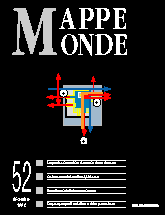

Alain MIOSSEC. Responses to marine erosion. (8 fig.)
Marine erosion can be combated in several ways. Hard defensive structures, such as dikes, rip-raps, groynes and breakwaters are effective and have been widely used. However, they disturb the morphodynamic equilibrium of beaches. Other methods, such as artificial beach nourishment, may be more interesting. Restrictions on coastal development are another way to manage beach erosion.
keywords: COASTAL DEFENCE, COASTAL ENGINEERING, COASTAL EROSION, COASTAL MANAGEMENT
Relative sea levels. (5 fig.)
Although the global sea level has risen slightly over the past century, there is considerable variability on a regional and local scale. Two case studies, in Italy and Greece, illustrate certain effects of a recent rise in the relative sea level and the counter-measures taken. A third case study examines the impacts of the rising sea level and tropical cyclones on coral reefs.
keywords: CORAL REEF, EARTHQUAKE, FRENCH POLYNESIA, GULF OF CORINTH, ISOSTASY, SEA LEVEL, TIDE GAUGE, VENICE LAGOON
Roland PASKOFF. The crisis affecting beaches: shortage of sediments. (2 fig.)
Beach erosion, a world-wide phenomenon, is mainly caused by a shortage of sand and shingle on coasts. This shortage, which began after the culmination of the postglacial transgression, has worsened in recent times as a result of human activity, particularly the construction of dams on rivers. The expected rise in the sea level is likely to further exacerbate beach erosion.
keywords: BEACH, COASTAL SEDIMENT BUDGET, MARINE EROSION, RISING SEA-LEVEL, STORM
Vincent VESCHAMBRE. «Lives and works in New York and in Paris» (4 fig.)
Internationally renowned contemporary artists “are born, live and work” in a few large western metropolises, where the concentration of collectors and institutions making up the art market is greatest. Artists born in other places head to the major cultural capitals to make a name for themselves. While New York has overtaken Paris in terms of the concentration of recognized artists, Paris is still the main crossing and meeting point for artists from around the world.
keywords: ARTIST, CULTURAL CAPITAL, MOBILITY, SOCIAL GEOGRAPHY
The centres of Latin-American literature (4 fig.)
A statistical and cartographic analysis of the places of birth and death of Latin American writers aims to provide a quantitative and cartographic basis for the notion of "cultural Meccas".
keywords: LATIN AMERICA, LITERATURE, WRITERS
Dominique CROZAT. Eradicating slums in Lisbon (5 fig.)
The traditional image of Lisbon as a poor, run-down city with many slums corresponded to the reality analysed by geographers in the early 1980s. But now? A study of new data and urban policy shows that Lisbon is changing rapidly and can be expected to look much like other European metropolises in the early years of next century.
keywords: LISBON, RENOVATION, SLUMS, URBAN CHANGE, URBAN POLICY
Michel POUYLLAU. The structures and territorial model of Hanoi (4 fig.)
The thousand-year-old city of Hanoi has been impacted by the French colonial remodelling that began in the 1890s and by recent economic "renovation" or doi moi (1986). The decision to establish the centre of the Vietnamese nation on this delta plain structured by a patchwork of rice paddies has led to the densification of a metropolis undergoing "reconstruction", while encroachment on agricultural land has not been completely contained. Physical and public policy constraints are creating an "unfolding" and a tangential urban development model.
keywords: COLONISATION, HANOI, METROPOLIS, URBAN DEVELOPMENT
Children's maps in the eighteenth century (3 fig.)
Children have always been fascinated by maps. As early as the 18th century, a wide variety of atlases specially designed for children were produced in a number of western European countries.
keywords: ATLAS, CHILDREN, 18TH CENTURY, MAP
Marc BAYARD. The area created by perspective in the theatre: an idealised or a realistic space. (2 fig.)
Various techniques of perspective were used in the theatre of the late sixteenth and early seventeenth centuries to include man in or exclude man from the illusory geography of the stage. The cases of Italy and France.
keywords: ILLUSION, PERSPECTIVE, PLAYGROUND, STAGE AREA, THEATRE SCENERY
Book reviews. (Yves André, Jean Pierre Gaudin, Michel Vigouroux)
Mappemonde 3/98![]()
![]() Mappemonde 1/99
Mappemonde 1/99
Last modified: December 8, 1998